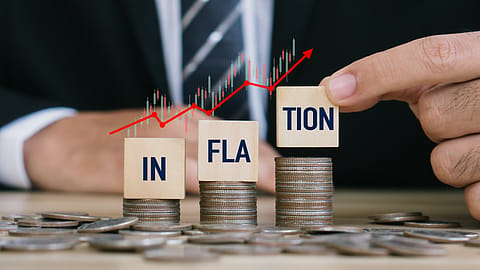India’s CPI inflation drops to 8-year low of 1.54% in September on food deflation, favourable base
Core inflation rose to 4.5% due to precious metal price spikes. This decline may allow the RBI to focus on economic growth, with a potential rate cut in December.

CPI inflation eased to 1.54% in September, slipping below the Reserve Bank of India (RBI’s) lower tolerance band of 2%, according to the government data released on October 13, 2025. The headline inflation marked the lowest reading in over eight years, and saw a decrease of 53 basis points from a two-month high of 2.07% in August 2025.
Easing of inflation was supported by a favourable base effect and moderation in food prices. "With this decline, inflation for Q2FY26 averaged 1.7%, slightly below the RBI’s projection of 1.8%. Core inflation inched up to 4.5%, mainly because of sharp spike in precious metal prices. Excluding precious metals, core CPI inflation remained benign at 3.0%. Deflation in the food basket deepened to 1.4%, aided by falling prices for vegetables, pulses, and spices," says Rajani Sinha, Chief Economist, CareEdge Ratings. It is the lowest year-on-year inflation after June, 2017.
In terms of food inflation, the year-on-year inflation rate, based on All India Consumer Food Price Index (CFPI) for September 2025, fell to a seven-year low at -2.28%, with corresponding inflation rates for rural and urban at -2.17% and -2.47%, respectively. The food inflation saw a decrease of 164 basis points in September 2025 from August 2025.
The decline in food inflation has been mainly attributed to favourable base effect and to decline in inflation of vegetables, oil and fats, fruits, pulses and products, cereal and products, egg, fuel and light, etc. In rural India, a decrease in headline and food inflation was observed in September 2025, as the retail inflation fell to 1.07% in September from 1.69% in August, while the food inflation fell to -2.17% from -0.70% in the same period.
In urban India as well, the headline inflation fell to 2.04% in September from 2.47% in August. Food inflation also fell to -2.47% in September from -0.53% in August. The housing inflation for September, 2025 was 3.98% while the corresponding inflation rate for August 2025 was 3.09%. The housing index is compiled for urban sector only.
The education inflation also fell to 3.44% in September from 3.60% in August; the inflation data for education was compiled jointly for both rural and urban sector. The health inflation fell to 4.34% in September from 4.40% in August 2025, with the data compiled jointly for rural and urban sector. Similarly, the transport & communication inflation rate fell to 1.82% in September from 1.94% a month earlier, while fuel & light saw inflation dipping to 1.98% from 2.32% during the period.
GST 2.0 to lower inflation by 70–90 bps annually
Recommended Stories
The recent rationalisation of GST rates is further expected to have a positive impact on the overall inflationary environment. "We estimate that it could lower CPI inflation by 70–90 bps annually under the current basket, assuming effective pass-through to consumers," says Sinha of CareEdge.
With food inflation subdued and demand-side pressures contained, CareEdge projects average inflation for FY26 at 2.4%. "From a monetary policy perspective, moderating inflation provides the RBI with greater room to focus on supporting economic growth, in the midst of rising external headwinds and uncertainties surrounding the trade negotiations with the US. In case growth indicators weaken, the latest inflation figures open the door for a potential 25 bps rate cut in December."
Inflation to stay benign
Looking ahead, food inflation is likely to stay benign, supported by a favourable base and good monsoon, says CareEdge Ratings' Sinha. "That said, risks remain from the late withdrawal of the monsoon and heavy rains in certain regions, which could risk crop damage. Additionally, persistently high double-digit inflation in edible oils warrants close monitoring, given weak sowing trends, import dependence, and elevated global edible oil prices. On the external front, global commodity prices are broadly expected to remain benign given the weak global growth prospects, overcapacity in China and OPEC’s decision to raise crude oil output," Sinha said.
With the festive season right around the corner, the retail inflation is likely to cool down further, especially against the backdrop of GST reforms that will significantly aid consumption, says Sanjay Kumar, CEO & MD, Rassense Pvt Ltd. "Parallelly, the last-mile discussion between the US and India on trade tariffs, with chances of the two parties reaching a middle-ground, will reflect positively on the inflation front. While there are strong positive indicators, what remains imperative for growth is the inculcation of technology in the agriculture sector, as that will drive a 5x growth in productivity, directly boosting outcome and further moderate inflation," says Kumar.